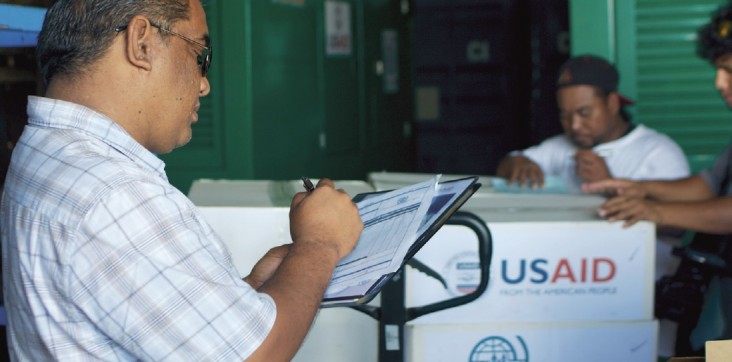
The Federated States of Micronesia (FSM) and the Republic of the Marshall Islands (RMI) are two nations collectively made up of 1,800 islands spanning 2,000 miles across the northwestern Pacific Ocean, with a combined population of more than 155,000 people. These islands are vulnerable to disasters, due to the impact of global climate change, rising sea levels, and shifting rainfall and storm patterns.
Their archipelagic landscape, coupled with limited transportation infrastructure, hampers the dispatch of emergency supplies in disaster situations, affecting thousands of lives and destroying homes, communities, and critical infrastructure.
ACTIVITIES
Through the Compacts of Free Association between the United States Government and the Governments of the RMI and FSM, USAID has the mandate to provide supplementary emergency relief and reconstruction assistance in the event of U.S. Presidentially declared natural disasters in FSM and RMI. In addition, USAID developed a five-year program called PREPARE to protect the lives and livelihood of those in this region. To accomplish this, USAID is working to:
- Strengthen capacity of government and non-government organizations to prepare for, and respond to disasters. USAID engages governments, civil society, external relief agencies, and first responders to develop well-defined and coordinated roles within disaster responses.
- Implement contingency planning, which is reinforced by information systems. This includes coordinating GIS-based maps that integrate demographics, logistics data, high-risk areas. The maps pinpoint critical infrastructure - including hospitals, schools and roads – and the location of emergency stockpiles. This information platform will be utilized to coordinate relief activities in the event of a disaster and assist in recovery and reconstruction.
- Coordinate emergency operations support and post-disaster reconstruction for the US Government to streamline the provision of life-saving assistance and infrastructure rehabilitation. The program also maintains desalination and power generation capacity. USAID works with local and international experts to create culturally-relevant and environmentally-appropriate housing and infrastructure designs, which will enable rapid reconstruction in the event of a disaster.







Comment
Make a general inquiry or suggest an improvement.